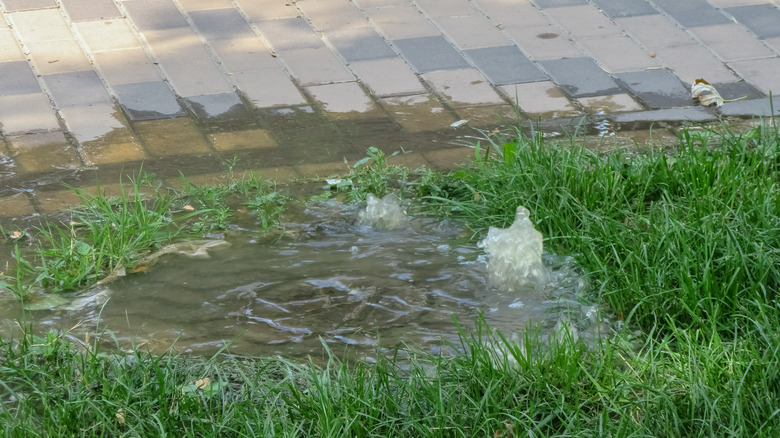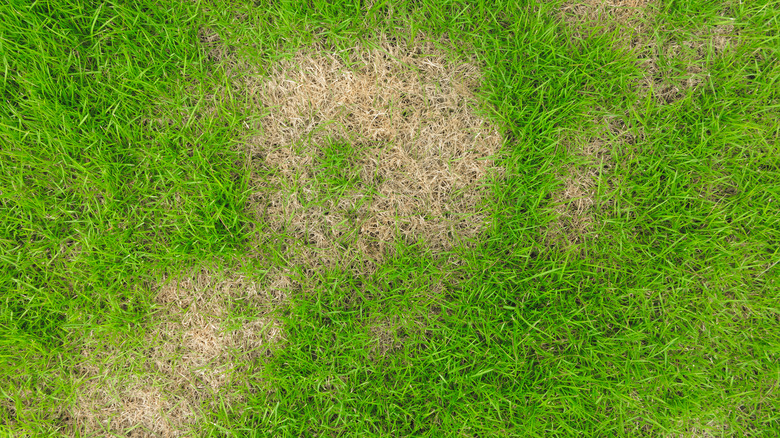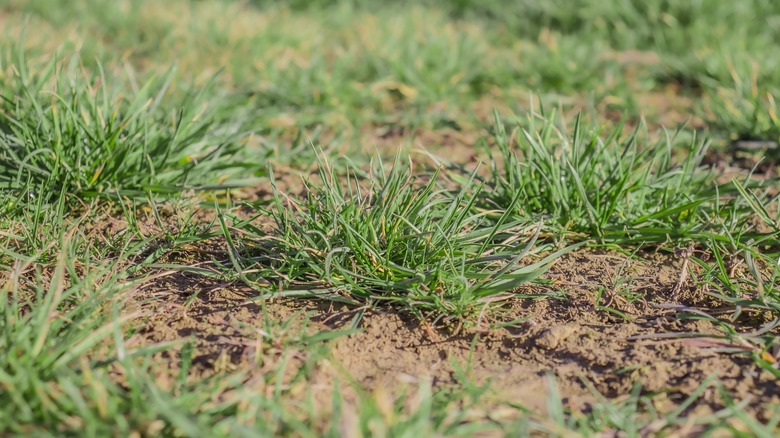What A Patchy Lawn Could Mean For Your Plumbing
Patchy lawns are unsightly and really take away from the curb appeal that most homeowners try to foster for their property. Aside from the obvious visual issues that appear with a patchy lawn, this change in the outdoor space of your home can signal a more intrusive problem that requires fast action (via realtor.com).
Patchy lawns come about as a result of underlying changes to the health of your yard. Additional moisture, a change in typical sun exposure, and other alterations play a major role in the growth, health, and texture of your grass. Uneven exposure to any of these components that support healthy plant growth can create a patchwork of fast and slow-growing grass.
Inspecting your sprinkler system will allow you to quickly diagnose whether you're seeing a change in grass conditions as a result of a care issue or something more pervasive. If your sprinklers are continuing to provide full coverage of your lawn, then you may be dealing with a leak in your plumbing instead.
Your lawn may be consistently wet in one place
A break in the pipework that brings water into or out of your home is a likely candidate for patchiness in your lawn. This problem is most apparent when you see a combination of strange patches alongside a section of the lawn that can't seem to stay dry, as explained by realtor.com.
Leaking pipes can spell disaster for your lawn: This issue is marked by an erosion of the soil, increased activity and volume of insects in the affected area, and more (via Custom Lawn & Landscape). Likewise, a leak in your plumbing will increase the total volume of water that flows through your metered connection, raising the cost of your water bill—potentially by a dramatic figure if left unchecked for many weeks or months.
Typically, the lawn will take a few days to completely dry out after heavy rainfall. This is completely normal, and the drying time can vary depending on your local area and the soil composition that exists on your property. But after a few days, a lawn (or section) that won't dry and is showing a growth pattern that has diverged from the typical uniformity of a grass landscape is signaling a larger issue that you can't afford to ignore.
Sewer problems create patchy or smelly lawns
Patchy lawns that come with a putrid smell signal a different sort of leaking problem. While a wet lawn acts as an indicator of general plumbing leaks, a smelly one is a red flag surrounding your septic tank or community sewer lines. The pipes that carry away wastewater and solid waste alike can crack, leak, or rupture. When this happens, the nutrients and bacteria found in sewer lines can quickly energize the growth rate of affected foliage above the leak (via realtor.com).
Sewer line issues are also typically noticeable from inside the home, too. This happens when a septic tank overflows or the sewer lines that run under your lawn are blocked—by what is often referred to as a fatberg, according to HomeServe. While grass will shoot up in certain areas of the lawn when exposed to the rich, compost-like matter present in these pipes, you will likely smell the backup from your sinks, toilets, and other drains that are linked into the system.


